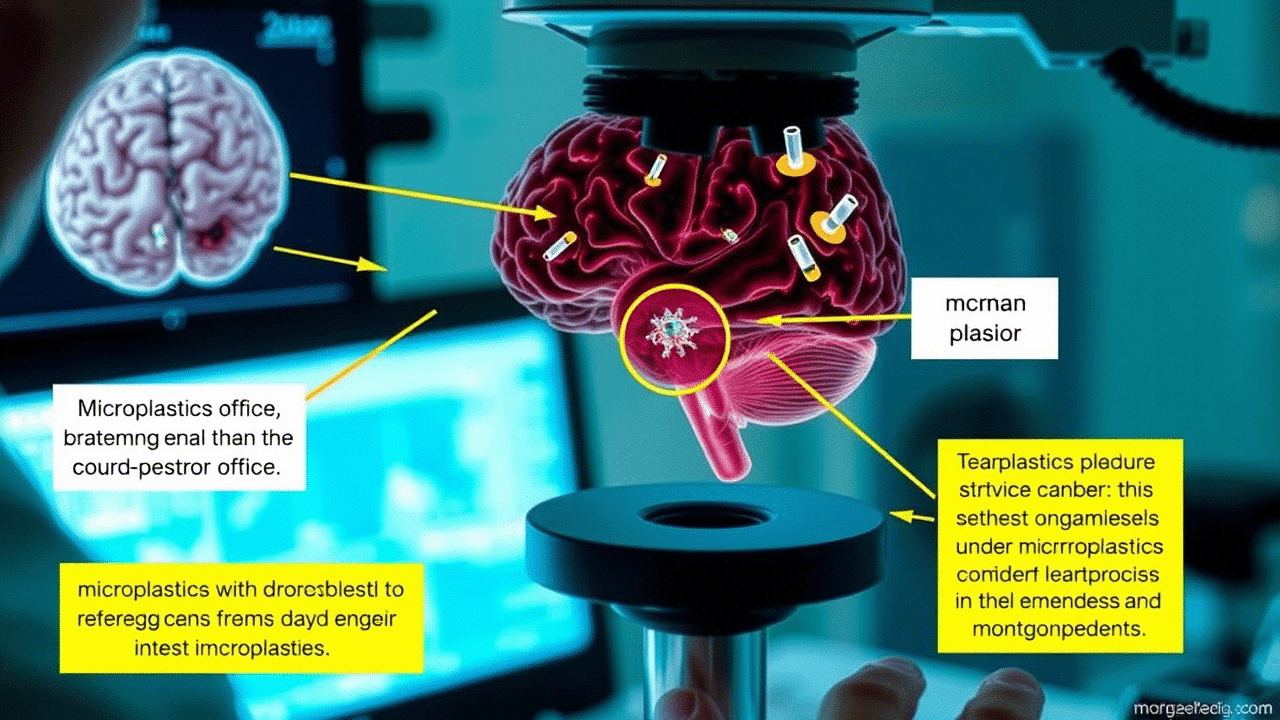Microplastics Found in Human Brain Tissue

Microplastics are tiny plastic particles that have become a growing concern in recent years. Recent studies have revealed alarming levels of microplastic contamination in human brain tissue. This contamination has raised significant health concerns, especially regarding its potential link to neurological disorders such as dementia. While researchers have confirmed the presence of these particles, the implications for human health remain unclear. This article delves into the findings of recent studies, the potential impacts on brain health, and the ongoing debates surrounding research methodologies.
Study Highlights Rising Microplastic Levels
A groundbreaking study published in *Nature Medicine* on February 3 indicates a dramatic rise in microplastic levels in human brain tissue. Researchers found that between 2016 and 2024, the concentration of microplastics increased by approximately 50 percent. Alarmingly, individuals who had died with dementia exhibited microplastic levels nearly six times higher than those without the condition. This study compared samples from 28 individuals who died in 2016 with 24 individuals who passed away in 2024.
The findings revealed that brain tissue contained the highest concentrations of microplastics, with levels ranging from seven to 30 times greater than those found in kidney and liver tissues. The most prevalent type of plastic detected was polyethylene, a common material used in food packaging, which accounted for 75 percent of the identified microplastics. These results suggest a concerning trend in the accumulation of microplastics over time, as comparisons with samples dating back to 1997 show a continuous increase. This research highlights the urgent need for further investigation into the sources and effects of microplastic contamination in the human body.
Potential Impact on Brain Health
The implications of microplastic accumulation in brain tissue are significant. Matthew Campen, a toxicologist at the University of New Mexico and co-author of the study, expressed concerns about the potential effects on brain health. He noted that microplastics could disrupt blood flow in brain capillaries or interfere with neural connections. These disruptions could have serious consequences for cognitive function and overall brain health.
While there is growing concern about the link between microplastics and dementia, it is important to note that no direct causation has been established. The relationship between microplastic exposure and neurological disorders remains a complex issue that requires further research. Understanding how these particles interact with brain tissue and their potential effects on cognitive decline is crucial. As scientists continue to explore this area, the findings underscore the importance of addressing environmental pollution and its potential health impacts.
Concerns Over Research Methods
Despite the alarming findings, some scientists have raised concerns about the research methodology used in the study. Oliver Jones, a professor of chemistry at RMIT University in Melbourne, questioned the biological plausibility of the results. He highlighted that the primary analytical method employed, pyrolysis-gas chromatography-mass spectrometry, might have led to overestimated plastic concentrations due to interference from brain fats.
These methodological concerns have sparked debates within the scientific community. However, toxicologist Emma Kasteel from Utrecht University emphasized the need for further investigation. She acknowledged that while the exact levels of microplastics in the brain may be uncertain, the confirmed presence of these particles warrants additional research. As the scientific community continues to scrutinize the findings, it is clear that understanding the implications of microplastic contamination is essential for public health and safety.
Observer Voice is the one stop site for National, International news, Sports, Editor’s Choice, Art/culture contents, Quotes and much more. We also cover historical contents. Historical contents includes World History, Indian History, and what happened today. The website also covers Entertainment across the India and World.

